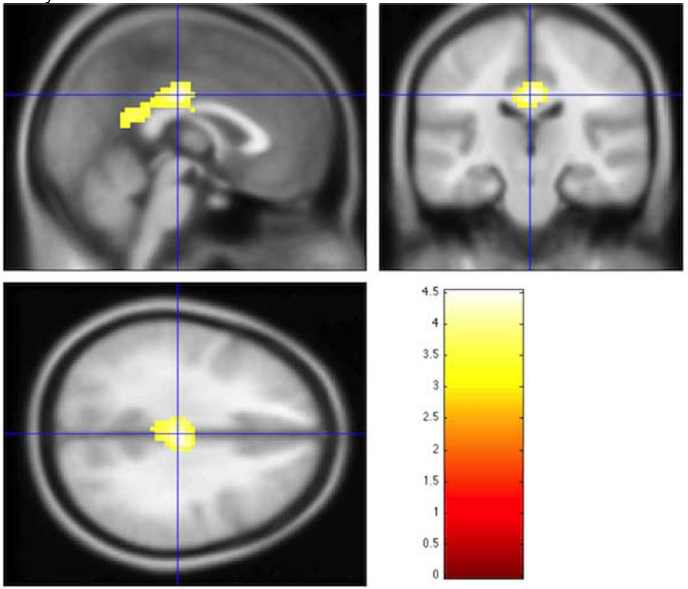No CrossRef data available.
Article contents
Posterior Cingulate Gyrus Associated with Cognitive-inhibition in Depressed Patients At-risk for Suicide
Published online by Cambridge University Press: 15 April 2020
Abstract
Suicidal behavior results from a complex interplay between stressful events and vulnerability factors, including neurocognitive alterations. Deficits in cognitive inhibition have previously been found in suicide attempters. Here, we examined the neural basis of these deficits in patients at-risk for suicide.
Functional magnetic resonance imaging was used to measure brain activation in 25 middle-aged depressed yet non-medicated suicide attempters (SA), 22 depressed patient controls with no personal or first-degree family history of suicidal behaviour (PC), and 27 healthy controls (HC) during the Go/No-Go response inhibition task.
In whole brain exploration of No-Go versus Go inhibition contrast, SA show elevated activities in posterior cingulate gyrus compared to HC (Cluster FWE = 0.022). Further exploration of each individual condition against baseline (e.g. No-Go versus Baseline or Go versus Baseline) suggest this regional differences are mainly due to No-Go baseline comparison within each groups: namely, HC show a large reduced activities during No-Go blocks while PC and SA failed to show similar reductions comparing to baseline.
SA showed unique differentiated patterns of neural activity during Go-No-Go response inhibition differ from HC and PC mostly involving posterior cingulate gyrus. These findings indicate that suicide attempts during middle-aged are associated with abnormal activity in response inhibition neural circuitry.

- Type
- Article: 0950
- Information
- European Psychiatry , Volume 30 , Issue S1: Abstracts of the 23rd European Congress of Psychiatry , March 2015 , pp. 1
- Copyright
- Copyright © European Psychiatric Association 2015





Comments
No Comments have been published for this article.